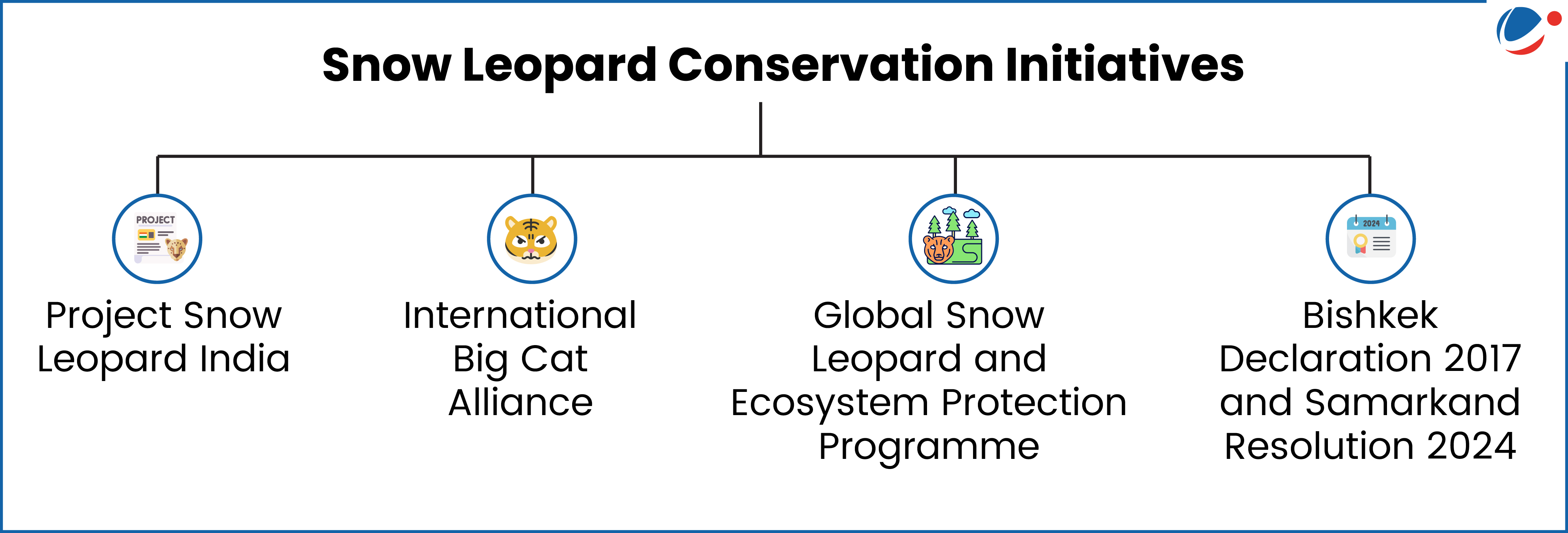Ladakh has one of the world's highest densities of Snow Leopard, representing 68% of India's species population.
Key Highlight of Study
- Area: Globally highest extensive densities in Hemis National Park, Kargil, and Leh, making one of the world's largest contiguous populations.
- Factors for high density:
- Resource-rich grasslands with a moderate climate and greater availability of prey.
- Less human disturbance as 61% of snow leopards in Ladakh were found to co-exist alongside human populations.
- Cultural reverence for wildlife among Ladakh’s communities, economic benefits from Snow Leopard tourism and conflict management strategies.
About Snow Leopards (Panthera uncia)
- Geographical Spread: Flagship species in the mountainous regions of South and Central Asia, spanning 12 countries.
- In India, found in Jammu and Kashmir, Ladakh, Himachal Pradesh, Uttarakhand and Sikkim in Western Himalayas and Arunachal Pradesh in Eastern Himalayas.
- Conservation status:
- IUCN Red List:Vulnerable.
- CITES Appendix I and CMS Appendix I
- Schedule I of the Wildlife (Protection) Act, 1972.
- Habitat: Steep, rugged terrains with rocky outcrops and ravines at an elevation of 3,000-5,000 metres.
- Characteristics: Having smokey-grey fur patterned with dark-grey to black rosettes, they are solitary animals, most active at dawn and dusk.




